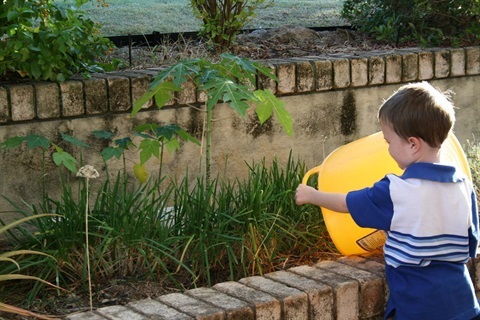Saving Water at School

Schools have many locations where water loss could be occurring; taps, drinking fountains, dishwashers and toilets...just to name a few!
Detecting a leak
Whilst it's a great idea to check the school at the end of the day for any leaks, by monitoring the water meter you may also discover a leak that is underground, and potentially costing the school a lot of money. It’s also handy to remind students (and staff) to use the half flush where ever possible.
Everyday use items
Make sure taps are turned off tight, drinking bubblers are not continuing to run after they are used, and toilet cisterns are not running or leaking after they are flushed. If these items are occurring, contact your school maintenance person and they may need to simply change a washer to stop the water from being wasted and potentially adding up to an expensive water bill.
Washing machines and dishwashers should only run once they are full and if dishes are being done in the sink – only use as much water as you need, not a full sink.
The gardens
When it comes to gardens and outdoor areas plant native species which are drought tolerant (where possible), use mulch on garden beds to slow evaporation rates and keep on top of the weeds, as they compete with native plants for water. By placing mulch on garden beds it will also reduce weed growth.
Plant windbreaks to reduce the drying effect of the wind and provide some shade for the school grounds. Use paving material which allow water to soak through them or alternatively collect run off and place it in a rainwater tank, where the water is reused on the school grounds.
When watering garden beds, make sure the hose is fitted with a trigger nozzle. This allows you to control the amount of water you are using, and it is not wasted when moving between locations. Always remember to turn off the tap when you have finished – just in case the hose springs a leak!
If you are looking to build a new garden bed or upgrade an existing irrigation system, consider installing a dripper system as they water near the root zone, which is where it is needed most. Also make sure the system can be used in both manual and automatic mode, as during times of water restrictions only manual systems can be used.
Plants don’t always need a lot of water so make sure you know their needs and water appropriately.
Visit the Smart Water Advice website to discover ways of reducing water usage across different areas of your school. We suggest you use the home and outdoors sections for further information.
Download the 'how to save water at school' fact sheet